The Mummy (1999 film)
5.8 /10 1 Votes
55% Rotten Tomatoes Film series The Mummy Film Series Duration Language English | 7/10 IMDb 48% Metacritic Genre Action, Adventure, Fantasy Country United States | |||||||||||||||||||||||||||||||||
 | ||||||||||||||||||||||||||||||||||
Release date May 7, 1999 (1999-05-07) Writer Stephen Sommers (screen story), Lloyd Fonvielle (screen story), Kevin Jarre (screen story), Stephen Sommers (screenplay) Genres Action Film, Adventure Film, Fantasy Cast (Richard O'Connell), (Evelyn Carnahan), (Jonathan Carnahan), (High Priest Imhotep), (Beni Gabor), (Ardeth Bay) Similar movies Raiders of the Lost Ark , The English Patient , The Spy Who Loved Me , The Name of the Rose , Team America: World Police , The Ten Commandments Tagline The legend you know. The adventure you have yet to imagine. | ||||||||||||||||||||||||||||||||||
The mummy 2 10 movie clip imhotep is mummified alive 1999 hd
The Mummy is a rousing, suspenseful and horrifying epic about an expedition of treasure-seeking explorers in the Sahara Desert in 1925. Stumbling upon an ancient tomb, the hunters unwittingly set loose a 3,000-year-old legacy of terror, which is embodied in the vengeful reincarnation of an Egyptian priest who had been sentenced to an eternity as one of the living dead.
Contents
- The mummy 2 10 movie clip imhotep is mummified alive 1999 hd
- The mummy 1 10 movie clip the pharaoh is killed 1999 hd
- Plot
- Cast
- Origins
- Principal photography
- Special effects
- Soundtrack
- Box office
- Critical reaction
- Similar Movies
- Adaptations
- References
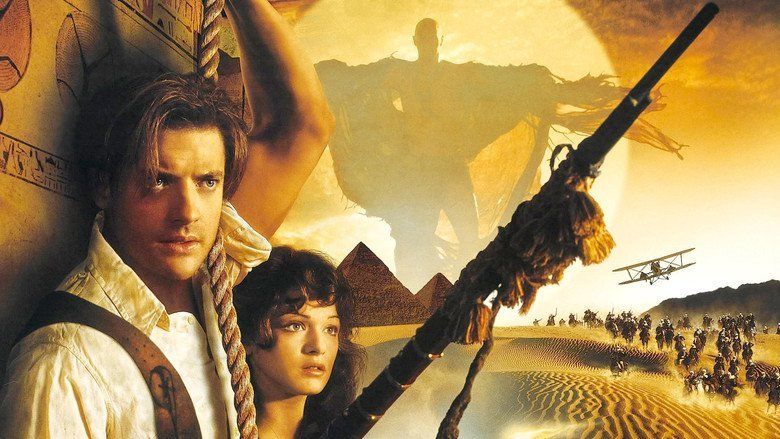
The Mummy is a 1999 American dark fantasy adventure film written and directed by Stephen Sommers and starring Brendan Fraser, Rachel Weisz, John Hannah, and Kevin J. OConnor, with Arnold Vosloo in the title role as the reanimated mummy. It is a loose remake of the 1932 film The Mummy which starred Boris Karloff in the title role.
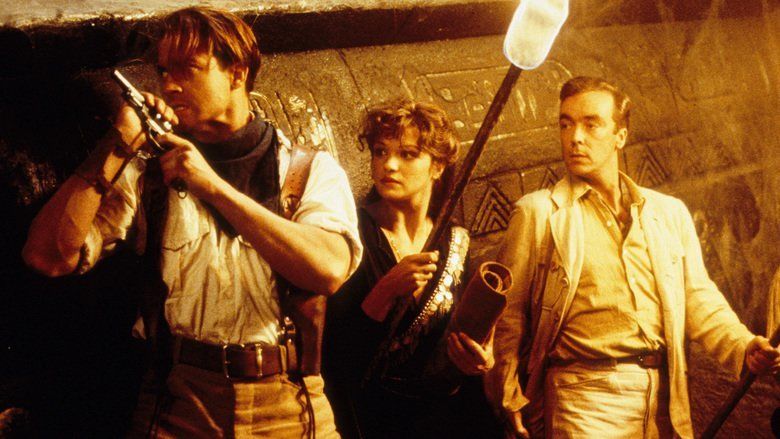
Filming began in Marrakech, Morocco, on May 4, 1998, and lasted seventeen weeks; the crew had to endure dehydration, sandstorms, and snakes while filming in the Sahara. The visual effects were provided by Industrial Light & Magic, who blended film and computer-generated imagery to create the titular Mummy. Jerry Goldsmith provided the orchestral score.
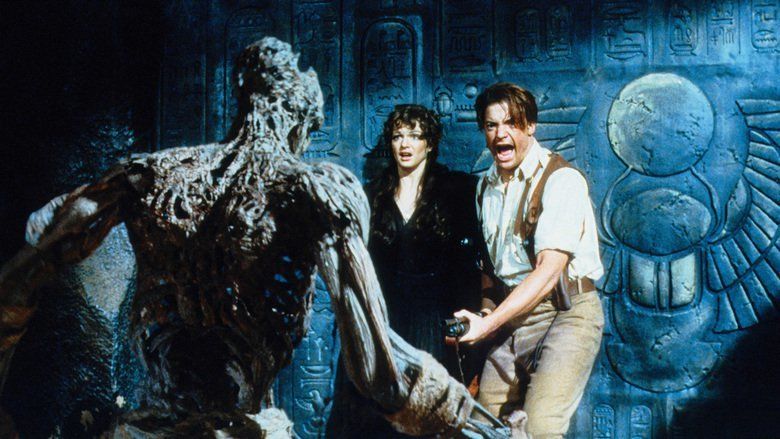
The Mummy opened on May 7, 1999, and grossed $43 million in 3,210 theaters during its opening weekend in the United States; the film went on to gross $416 million worldwide. The box-office success led to a 2001 sequel, The Mummy Returns, as well as The Mummy: The Animated Series, and the prequel/spin-off film The Scorpion King. Seven years later, the third installment, The Mummy: Tomb of the Dragon Emperor, opened on August 1, 2008. Universal Pictures also opened a roller coaster, Revenge of the Mummy, in 2004. Novelizations of the film and its sequels were written by Max Allan Collins.
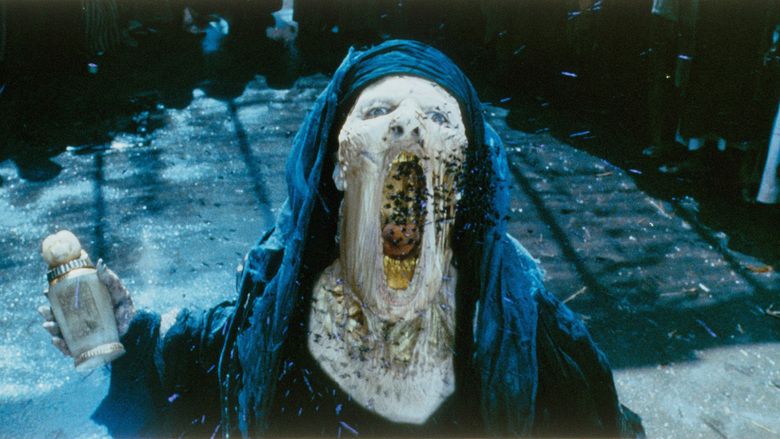
Dashing legionnaire Rick O'Connell and Beni, his weasel of a companion, stumble upon the hidden ruins of Hamunaptra while in the midst of a battle in 1923, 3,000 years after Imhotep has suffered a fate worse than death; his body will remain undead for all eternity as a punishment for a forbidden love.
The mummy 1 10 movie clip the pharaoh is killed 1999 hd
Plot
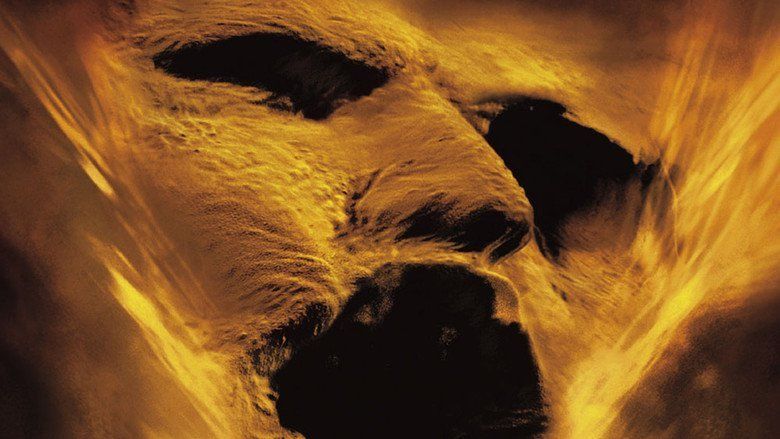
In Thebes, Egypt, 1290 BC, high priest Imhotep engages in an affair with Anck-su-Namun, the mistress of Pharaoh Seti I. When the Pharaoh discovers their tryst, Imhotep and Anck-su-Namun kill him. As Setis guards arrive, Imhotep flees while Anck-su-Namun kills herself, intending for Imhotep to resurrect her. After Anck-su-Namuns burial, Imhotep and his priests steal her corpse and travel to Hamunaptra, the city of the dead, where they begin the resurrection ceremony. However, the group is intercepted by Setis bodyguards, the Medjai, before the ritual could be completed, and Anck-su-Namuns soul is sent back to the Underworld. Imhoteps priests are all mummified alive. Imhotep himself is sentenced to immortal agony, condemned to suffer the Hom Dai curse: having his tongue removed and then being buried alive with flesh eating scarab beetles. Imhotep is buried under high security, sealed away in a sarcophagus at the feet of a statue of the Egyptian god Anubis, and kept under strict surveillance by the Medjai, since if Imhotep were ever to resurrect, the entire world would be doomed.

In 1923, well over 3000 years after Imhotep was buried, a unit of the French Foreign Legion battle with Tuareg nomads at Hamunaptra. The unit is swiftly overwhelmed, leaving only two survivors: cowardly Hungarian thief Beni Gabor flees, while his American friend and soldier Rick OConnell is cornered. The nomads suddenly flee in terror when they hear sinister whispers, and Rick quickly follows them when the ground appears to come to life. Watching from afar, the Medjai, watching over the Tuaregs and the Legion, decide to let the desert kill OConnell.
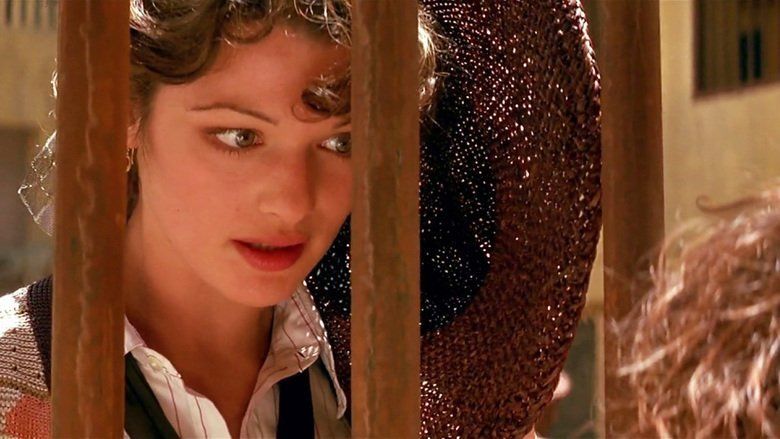
Three years later, Jonathan Carnahan presents his sister Evelyn, a Cairo librarian and aspiring Egyptologist, an intricate box and map which Jonathan says he found in Thebes. After the pair discover the map leads to Hamunaptra, Jonathan reveals he stole it from an American adventurer, soon revealed to be Rick OConnell, who survived the desert only to end up in prison. Evelyn and Jonathan visit Rick; he tells them that he knows the location of the city, and makes a deal with Evelyn to lead them there, once Evelyn saves him from being hanged by bribing the prison warden with a share in the promised treasure.
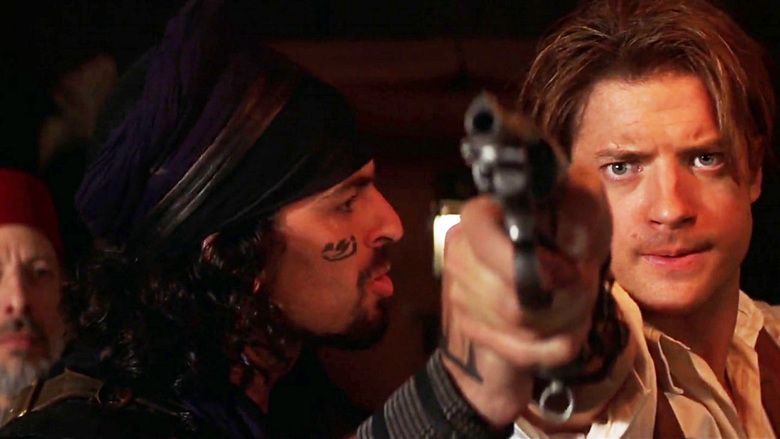
Rick led Evelyn, Jonathan, and the warden to the city, where the group encounters a band of American treasure hunters led by the famed British Egyptologist Dr. Allen Chamberlain and guided by Beni, who OConnell is less than pleased to discover on the boat. Shortly after reaching Hamunaptra, the warden is killed by a scarab. The expeditions are then attacked by the Medjai, led by the warrior Ardeth Bay. Ardeth warns them of the evil buried in the city, but despite his warning, the two expeditions continue to excavate in separate portions of the city. Evelyn searches for the famous Book of the Living, a book made of pure gold, as the history of such a book was what first interested her in Egypt. Instead of finding the book, however, she, Rick, and Jonathan stumble upon the statue of Anubis and the remains of Imhotep buried underneath. The team of Americans, meanwhile, discover a chest with ancient engravings that Chamberlain deciphers as saying that any and all who open the box are cursed if Imhotep is awakened. While Beni refuses to assist them and flees, the Americans open the chest to find the black Book of the Dead, accompanied by canopic jars carrying Anck-su-Namuns preserved organs. Chamberlain steals the Book of the Dead while each of the Americans pockets a jar as loot.
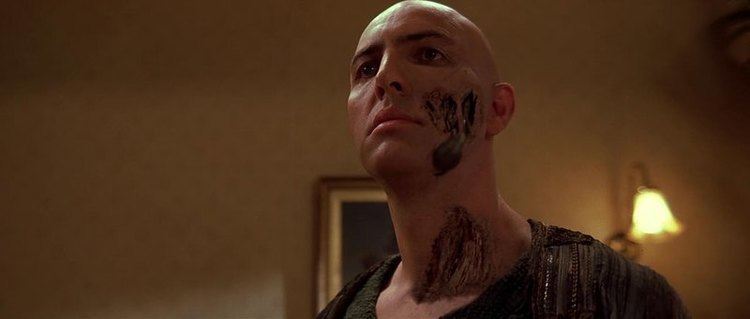
At night, Evelyn takes the Book of the Dead and reads a page aloud, accidentally awakening Imhotep. A cloud of locusts descends on the city, devouring the local diggers and trapping the two expeditioners inside the pyramid. One of the Americans, Burns, is left behind in the confusion and is attacked by Imhotep, losing his eyes and tongue. The Medjai rescue Burns, and escort the expeditioners back to Cairo, but Imhotep follows them with the help of Beni, who bargains with Imhotep; the creature promises not to kill Beni in return. Imhotep absorbs the life from Chamberlain and the Americans, returning to full strength, and bringing the 10 plagues back to Egypt. Seeking a way to stop Imhotep, Rick, Evelyn and Jonathan meet Ardeth at a museum. After Evelyn reveals that Imhotep referred to her as Anck-su-Namun in Hamunaptra, Ardeth and museum curator Terrence hypothesize that Imhotep wants to resurrect his lover again and will do so by sacrificing Evelyn. Evelyn muses that if the Book of the Dead brought Imhotep back to life, the Book of the Living can kill him again. As they deduce the location of the Book of the Living, Imhotep corners the group with an army of slaves. Evelyn agrees to accompany Imhotep if he spares the lives of the rest of the group. Imhotep goes back on his word and leaves his slaves to kill the group anyway. However, Rick discovers an entrance to the sewers and they escape. Terrence sacrifices himself just to buy the others time to escape.
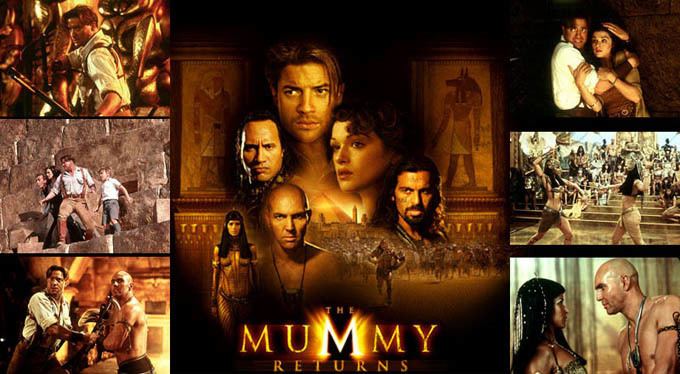
Imhotep, Evelyn and Beni return to Hamunaptra, pursued by Rick, Jonathan, and Ardeth. Imhotep awakens Anck-su-Namun, and prepares to sacrifice Evelyn, but she is rescued after an intense battle with Imhoteps mummified priests. Jonathan reads from the Book of Amun-Ra, awakening a group of mummified warriors, who kill Anck-su-Namun. When Evelyn reads from the Book, Imhotep becomes mortal again and Rick stabs him, forcing him into the River of Death. Rapidly decaying, Imhotep leaves the world of the living, vowing revenge with the same words he carved into his sarcophagus, Death is only the beginning. While looting treasure from the pyramid, Beni accidentally sets off an ancient booby trap and is trapped by a swarm of flesh-eating scarabs as Hamunaptra collapses into the sand. The heroes escape, although they lose the Book of Amun-Ra in the process. Ardeth rides away as Rick and Evelyn kiss and, with Jonathan, ride off into the sunset on a pair of camels laden with Benis treasure.
Cast
An adventurer who served in the French Foreign Legion. Producer James Jacks offered the role of Rick OConnell to Tom Cruise, Brad Pitt, Matt Damon and Ben Affleck but the actors were not interested or could not fit the role into their respective schedules. Jacks and director Stephen Sommers were impressed with the money that George of the Jungle was making at the box office and cast Brendan Fraser as a result; Sommers also commented that he felt Fraser fit the Errol Flynn swashbuckling character he had envisioned perfectly. The actor understood that his character "doesnt take himself too seriously, otherwise the audience cant go on that journey with him".
A clumsy yet intelligent Egyptologist. Evelyn undertakes the expedition to Hamunaptra to discover an ancient book, proving herself to her peers. Rachel Weisz was not a big fan of horror films but did not see this film as such. As she said in an interview, "Its hokum, a comic book world."
Pharaohs High Priest and one of Pharaoh Seti Is most trusted advisers, Imhotep betrays his sovereign out of love for Anck-su-namun. He is cursed and slowly killed for his treachery, but is resurrected 3,000 years later. South African stage actor Vosloo understood the approach that Sommers was going for in his screenplay, but only agreed to take on the role of Imhotep "if I could do it absolutely straight. From Imhoteps point of view, this is a skewed version of Romeo and Juliet."
Evelyns bumbling older brother, whose primary goal is to get rich; he signs on for the trip to Hamunaptra after learning from Evelyn that the city is supposed to be where the ancient pharaohs hid "the wealth of Egypt." Jonathan is also a thief; he steals the key needed to open the Book of Amun-Ra from Rick in prison, and manages to pickpocket the same key from Imhotep during the films climactic battle.
A former soldier in the French Foreign Legion, like Rick. Beni is obsessed with wealth, but also extremely cowardly; he betrays his employers when faced with Imhoteps wrath, who takes him as his servant when Beni prays in what Imhotep recognizes as the "language of the slaves".
An eminent British Egyptologist guiding the American expedition.
A Medjai and protector of the city.
The curator of the museum as well as a Medjai.
A secret lover of Imhotep and the mistress of Pharaoh Seti I. No other man was ever allowed to touch her.
An ally of Rick as well as the professional pilot and within his service in the Royal Air Force during the first World War.
A Prison Warden in Cairo Prison who releases Rick from prison after being offered a cut of any treasure Evelyn and Jonathan find at the city of the dead, and accompanies them on the expedition to protect his investment.
Origins
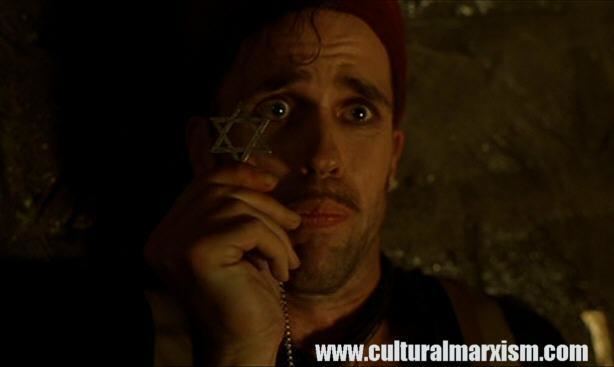
In 1992, producers James Jacks and Sean Daniel decided to update the original Mummy film for the 1990s. Universal Studios gave them the go-ahead, but only if they kept the budget around $10 million. Jacks remembers that the studio "essentially wanted a low-budget horror franchise"; in response, Jacks and Daniel recruited horror filmmaker/writer Clive Barker on board to direct. Barkers vision for the film was violent, with the story revolving around the head of a contemporary art museum who turns out to be a cultist trying to reanimate mummies. Jacks recalls that Barkers take was "dark, sexual and filled with mysticism", and that, "it would have been a great low-budget movie". After several meetings, Barker and Universal lost interest and parted company. Filmmaker George A. Romero was brought in with a vision of a zombie-style horror movie similar to Night of the Living Dead, but which also relied heavily upon elements of tragic romance and ambivalence of identity. Romero completed a draft in October of 1994, cowritten with Alan Ormsby and John Sayles, that revolved around female archaeologist Helen Grover and her discovery in Abydos of the tomb of Imhotep, an Egyptian general who lived in the time of Ramesses II. Unfolding in a nameless American city in modern times, events are set into motion when Imhotep inadvertently awakens as a result of his preserved cadaver having been exposed to rays from an MRI scan in a high-tech forensic archaeology lab. The script then progresses to a fish-out-of-water story when Imhotep, having regained his youthful appearance, recognizes the need to adapt to a contemporary society that is three thousand years removed from the one he came from. Assuming at first that he is a representative from the Bureau of Antiquities, Helen finds herself drawn into a tentative relationship with Imhotep while also experiencing clairvoyant flashbacks to a previous life in Nineteenth Dynasty Egypt as a priestess of Isis. Summoning mystical powers through incantation, Imhotep later resurrects the mummy of Karis, a loyal slave whose body had been resting alongside his masters in the same tomb but is now held in the local museum. After escaping into the city sewer system, Karis embarks on a vengeful rampage against the various criminal fences and high society antiquarians who had acquired stolen relics from his tomb. Romeros script was considered too dark and violent by Jacks and the studio, who wanted a more accessible picture. Compounding the issue was the fact that Romero was unable to extricate from a contract for a different film project he had in negotiation at the time with MGM, and so his involvement with the film was severed and the development of an entirely new script was commissioned to other writers.
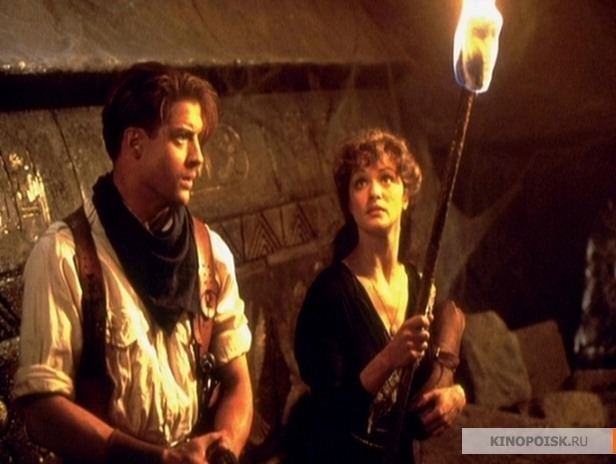
Joe Dante was the next choice, increasing the budget for his idea of Daniel Day-Lewis as a brooding Mummy. This version (co-written by John Sayles) was set in contemporary times and focused on reincarnation with elements of a love story. It came close to being made with some elements, like the flesh-eating scarabs, making it to the final product. However, at that point, the studio wanted a film with a budget of $15 million and rejected Dantes version. Soon after, Mick Garris was attached to direct but eventually left the project, and Wes Craven was offered the film but turned it down. Then, Stephen Sommers called Jacks and Daniel in 1997 with his vision of The Mummy "as a kind of Indiana Jones or Jason and the Argonauts with the mummy as the creature giving the hero a hard time". Sommers had seen the original film when he was eight, and wanted to recreate the things he liked about it on a bigger scale. He had wanted to make a Mummy film since 1993, but other writers or directors were always attached. Finally, Sommers received his window of opportunity and pitched his idea to Universal with an 18-page treatment. At the time, Universals management had changed in response to the box office failure of Babe: Pig in the City, and the loss led the studio to want to revisit its successful franchises from the 1930s. Universal liked this idea so much that they approved the concept and increased the budget from $15 million to $80 million.
Principal photography
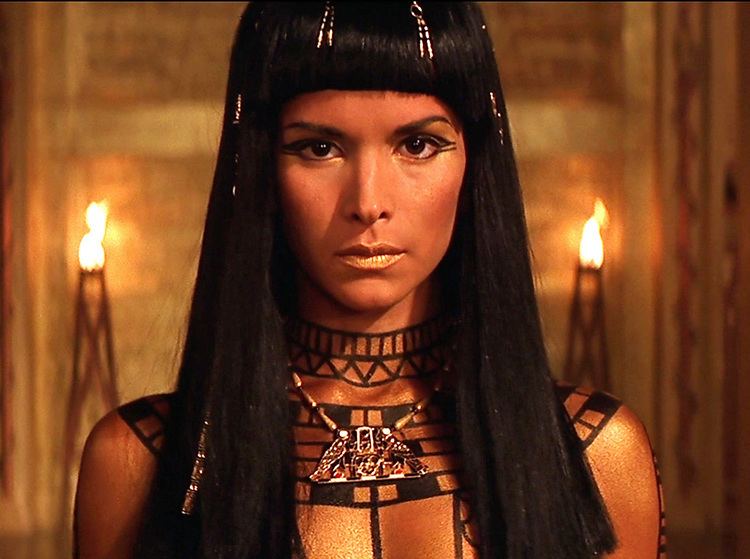
Filming began in Marrakech, Morocco on May 4, 1998 and lasted 17 weeks. Photography then moved to the Sahara desert outside the small town of Erfoud, and then to the United Kingdom before completion of shooting on August 29, 1998. The crew could not shoot in Egypt because of the unstable political conditions. To avoid dehydration in the scorching heat of the Sahara, the productions medical team created a drink that the cast and crew had to consume every two hours. Sandstorms were daily inconveniences. Snakes, spiders and scorpions were a major problem, with many crew members having to be airlifted out after being bitten.
Brendan Fraser nearly died during a scene where his character is hanged. Weisz remembered, "He [Fraser] stopped breathing and had to be resuscitated." The production had the official support of the Moroccan army, and the cast members had kidnapping insurance taken out on them, a fact Sommers disclosed to the cast only after shooting had finished.
Production Designer Allan Cameron found a dormant volcano near Erfoud where the entire set for Hamunaptra could be constructed. Sommers liked the location because, "A city hidden in the crater of an extinct volcano made perfect sense. Out in the middle of the desert you would never see it. You would never think of entering the crater unless you knew what was inside that volcano." A survey of the volcano was conducted so that an accurate model and scale models of the columns and statues could be replicated back at Shepperton Studios, where all of the scenes involving the underground passageways of the City of the Dead were shot. These sets took 16 weeks to build, and included fiberglass columns rigged with special effects for the movies final scenes. Another large set was constructed in the United Kingdom on the dockyard at Chatham which doubled for the Giza Port on the River Nile. This set was 600 feet (183 m) in length and featured "a steam train, an Ajax traction engine, three cranes, an open two-horse carriage, four horse-drawn carts, five dressing horses and grooms, nine pack donkeys and mules, as well as market stalls, Arab-clad vendors and room for 300 costumed extras".
Special effects
The filmmakers reportedly spent $15 million of the $80 million budget on special effects, provided by Industrial Light & Magic; the producers wanted a new look for the Mummy so that they would avoid comparisons to past movies. John Andrew Berton, Jr., Industrial Light & Magics Visual Effects Supervisor on The Mummy, started developing the look three months before filming started. He said that he wanted the Mummy "to be mean, tough, nasty, something that had never been seen by audiences before". Berton used motion capture in order to achieve "a menacing and very realistic Mummy". Specific photography was conducted on actor Arnold Vosloo so that the special effects crew could see exactly how he moved and replicate it.
To create the Mummy, Berton used a combination of live action and computer graphics. Then, he matched the digital prosthetic make-up pieces on Vosloos face during filming. Berton said, "When you see his film image, thats him. When he turns his head and half of his face is missing and you can see right through on to his teeth, thats really his face. And thats why it was so hard to do." Vosloo described the filming as a "whole new thing" for him; "They had to put these little red tracking lights all over my face so they could map in the special effects. A lot of the time I was walking around the set looking like a Christmas tree." Make-Up Effects Supervisor Nick Dudman produced the physical creature effects in the film, including three-dimensional make-up and prosthetics. He also designed all of the animatronic effects. While the film made extensive use of computer generated imagery, many scenes, including ones where Rachel Weiszs character is covered with rats and locusts, were real, using live animals.
Soundtrack
The Mummy: Original Motion Picture Soundtrack was composed and conducted by Jerry Goldsmith, with orchestrations provided by Alexander Courage. The soundtrack was released by Decca Records on May 4, 1999. Like many Goldsmith scores, the main theme uses extensive brass and percussion elements; Goldsmith also used sparing amounts of vocals, highly unusual for most of his work.
Overall, Goldsmiths score was well received. AllMusic described it as a "grand, melodramatic score" which delivered the expected highlights. Other reviews positively noted the dark, percussive sound meshed well with the plot, as well as the raw power of the music. The limited but masterful use of the chorus was also lauded, and most critics found the final track on the CD to be the best overall. On the other hand, some critics found the score lacked cohesion, and that the constant heavy action lent itself to annoying repetition. Roderick Scott off CineMusic.net summed up the score as "representative of both Goldsmiths absolute best and his most mediocre. Thankfully [...] his favourable work on this release wins out."
Box office
The Mummy opened on May 7, 1999, and grossed $43 million in 3,210 theaters in the United States on its opening weekend. The film went on to gross $415 million worldwide (Domestic: $155 million; Foreign: $260 million).
Critical reaction
The Mummy received mixed reviews from critics. On Rotten Tomatoes the film holds a 55% rating, based on 83 reviews, with an average rating of 5.7/10. The sites critical consensus reads, "Its difficult to make a persuasive argument for The Mummy as any kind of meaningful cinematic achievement, but its undeniably fun to watch." On Metacritic the film has a score of 48 out of 100, based on 34 critics, indicating "mixed or average reviews"
Roger Ebert, a film critic of the Chicago Sun-Times, gave the film 3 out of 4 stars, writing "There is hardly a thing I can say in its favor, except that I was cheered by nearly every minute of it. I cannot argue for the script, the direction, the acting or even the mummy, but I can say that I was not bored and sometimes I was unreasonably pleased." Likewise, Owen Gleiberman of Entertainment Weekly gave the film a "B-" grade and said, "The Mummy would like to make you shudder, but it tries to do so without ever letting go of its jocular inconsequentiality." Bob Graham of the San Francisco Chronicle gave the film high marks for the acting as well as the special effects.
Stephen Holden from The New York Times wrote, "This version of The Mummy has no pretenses to be anything other than a gaudy comic video game splashed onto the screen. Think Raiders of the Lost Ark with cartoon characters, no coherent story line and lavish but cheesy special effects. Think Night of the Living Dead stripped of genuine horror and restaged as an Egyptian-theme Halloween pageant. Think Abbott and Costello Meet the Mummy grafted onto a Bing Crosby-Bob Hope road picture (The Road to Hamunaptra?) and pumped up into an epic-size genre spoof." Publications like The Austin Chronicle and Dallas Observer came to the conclusion that despite good acting and special effects, the movie lacked cohesion; talking about the special effects, the Observer lamented "If only generating a soul for the film itself were so easy." Other publications such as Jump Cut felt that Industrial Light and Magics lock on special effects proved detrimental to The Mummy; "The mummy", Ernest Larson wrote for the Jump Cut, "is standard-issue I.L.&M.". Kim Newman of the British Film Institute judged the picture inferior to the original, as all the time was spent on special effects, instead of creating the atmosphere which made the original film such a classic. USA Today gave the film two out of four stars and felt that it was "not free of stereotypes", a sentiment with which the BFI concurred. "If someone complains of a foul odor, you can be sure an Arab stooge is about to enter a scene. Fraser, equally quick with weapon, fist or quip, may save the day, but even he cant save the picture", USA Today wrote.
Similar Movies
The Mummy and The Mummy Returns are part of the same movie series. The Mummy and The Mummy - Tomb of the Dragon Emperor are part of the same movie series. Stephen Sommers directed The Mummy and wrote the screenplay for The Scorpion King. Stephen Sommers directed The Mummy and was an executive producer for The Scorpion King 3: Battle for Redemption. Stephen Sommers directed The Mummy and wrote the screenplay for The Scorpion King 2: Rise of a Warrior.
Adaptations
The Mummy???s box office performance led to numerous sequels and spinoffs. In 2001, the sequel The Mummy Returns was released; the film features most of the surviving principal characters, as a married Rick and Evelyn confront Imhotep and the Scorpion King. The film also introduced the heroes son, Alex. The two films inspired both an animated series which lasted two seasons, and a spin-off prequel, The Scorpion King (2002), telling the story of the Akkadian warrior as he was crowned king.
A second sequel, called The Mummy: Tomb of the Dragon Emperor, was released on August 1, 2008. The story takes place in China with the Terracotta Emperor inspiring the villain, while Rachel Weisz was replaced with Maria Bello. A prequel to The Scorpion King, The Scorpion King 2: Rise of a Warrior, was released direct-to-DVD. Both films were poorly received by critics.
Two video game adaptations of The Mummy were published by Konami and Universal Interactive in 2000: an Action Adventure for the PlayStation and PC developed by Rebellion Developments, as well as a Game Boy Color puzzle game developed by Konami Nagoya. The film also inspired a roller coaster, Revenge of the Mummy in three Universal Studios Theme Parks: Hollywood, California; Orlando, Florida; and Sentosa, Singapore. On April 4, 2012, Universal announced their plans to reboot the franchise.
References
The Mummy (1999 film) WikipediaThe Mummy (1999 film) IMDbThe Mummy (1999 film) Rotten TomatoesThe Mummy (1999 film) MetacriticThe Mummy (1999 film) themoviedb.org
